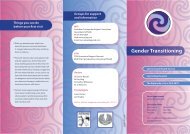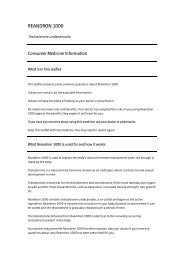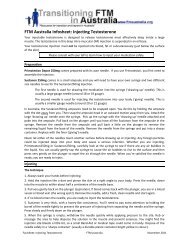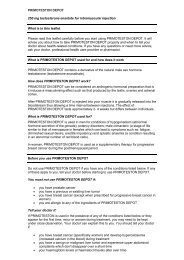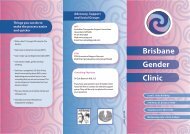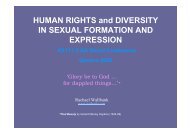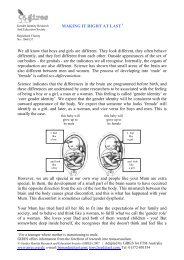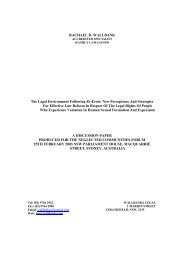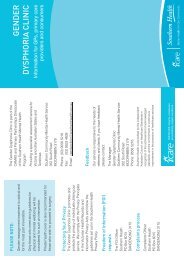It's My Body Isn't It - FTM Australia
It's My Body Isn't It - FTM Australia
It's My Body Isn't It - FTM Australia
Create successful ePaper yourself
Turn your PDF publications into a flip-book with our unique Google optimized e-Paper software.
This example demonstrates the power inherent in international human rights<br />
law, when given appropriate status, to transform substantive and procedural<br />
rights in domestic law. Which leads me to my final question – whether and<br />
in what ways might Re: Alex have been decided differently if a Human<br />
Rights Act had been in force in <strong>Australia</strong>.<br />
That is the subject of a paper all on its own so I will just touch on a few key<br />
areas in conclusion. I was fortunate to be provided with a paper by Rachel<br />
Wallbank, a family lawyer with a particular interest in sexuality and sex<br />
formation, which compares the Re: Kevin and Re: Alex decisions. Her paper<br />
has informed my thinking in this area. 40<br />
First, the way in which Alex’s ‘condition’, for want of a better term, was<br />
diagnosed and the proposed ‘treatment’ may have been different. The<br />
evidence of Alex’s treatment team was that he was suffering from ‘gender<br />
dysphoria’ or ‘gender identity disorder’, conditions which are identified and<br />
described in the Diagnostic and Statistical Manual of Mental Disorders.<br />
Wallbank describes this ‘diagnosis’ as “derived from the outdated medical<br />
presumption that the assertion by an individual of a sexual identity contrary<br />
to the sex indicated by their genitalia, gonads and chromosomes…must<br />
indicate disorder and/or illness.” 41 Perhaps the type of thinking that<br />
informed the European Court of Human Rights in Goodwin, which<br />
recognised and respected diversity in human sexual formation as protected<br />
by Article 8, could affect the way in which transsexualism is conceived of in<br />
special medical procedure applications. That would build on the tendency in<br />
Re: Alex and a similar case, Re: Brodie, 42 to resist pathologising<br />
transsexualism by characterising it as a ‘disease’.<br />
If a young person’s gender expression is accorded status as an enforceable<br />
human right, that begs the question whether the Family Court’s permission<br />
would even be required to perform medical procedures on a young person<br />
who strongly wishes to give physical effect to their expressed gender.<br />
Again, this is an issue raised in Rachel Wallbank’s paper. Where surgical<br />
intervention is contemplated (as it was not in the Re: Alex case) a reading of<br />
Gillick, even “spliced on” to Article 8 and UNCROC rights, suggests that<br />
seeking a court’s permission will be a necessary pre-condition to performing<br />
sex affirmation surgery. However, whether a court’s consent is required<br />
40 Rachel Wallbank, ‘Re Kevin in perspective’ (2004) 9 Deakin LR 22.<br />
41 Ibid, p. 472. See also Karen Gurney, ‘Sex and the Surgeon’s Knife: the Family Court’s<br />
Dilemma…Informed Consent and the Specter of Iatrogenic Harm to Children with Intersex Characteristics’<br />
(2007) 33 Am J L & Med 625.<br />
42 Re: Brodie (Special Medical Procedure) [2008] FamCA 334<br />
18



